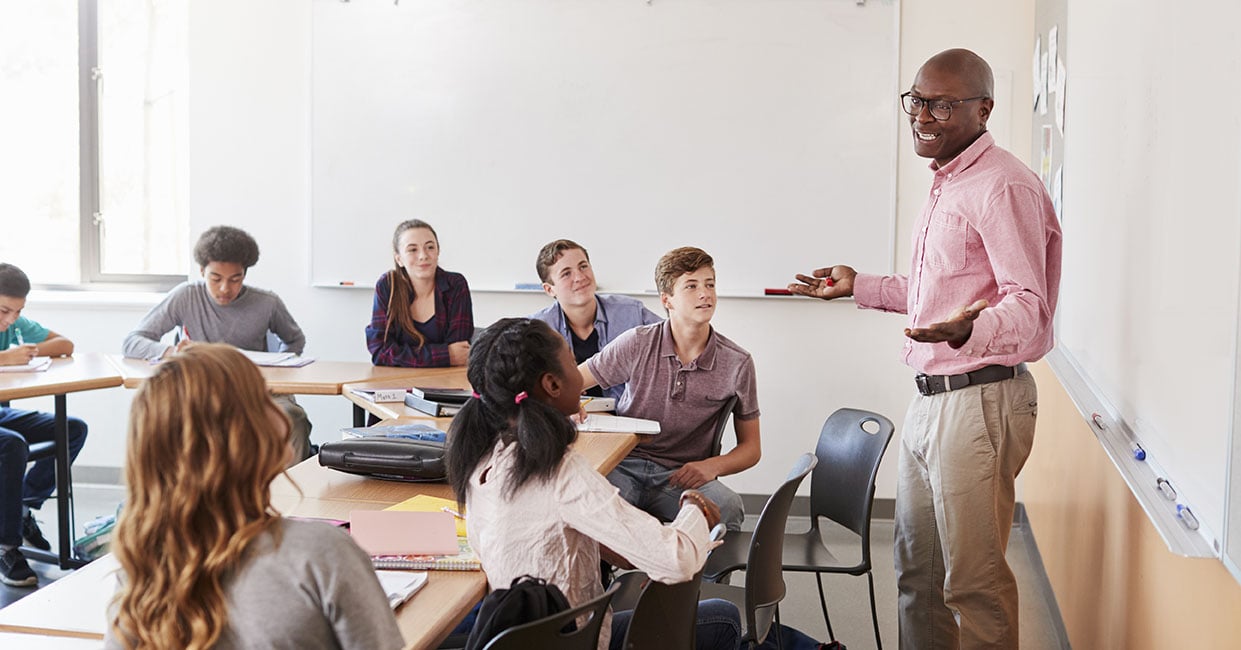
The link above will redirect you to our partner, National Geographic Learning which distributes Big Ideas Learning.

Understanding Desirable Difficulties and Productive Failure
It may be tempting to lower our standards and, in essence, make classes “easier” as a way to help students who have transitioned back to the physical classroom. While this is a nice gesture, we are doing a disservice to our students. We can be kind, while still maintaining high expectations and designing challenging activities that engage students and foster learning. Deep learning requires engagement so that students:
Science of learning research, for example, has shown that students are better able to learn the concept of variance if they are given a difficult real-world problem and asked to invent their own solutions instead of being directly taught the concept and formula (Kapur, 2012). Students learn more from being quizzed before learning about concepts so that they activate their prior knowledge and prepare their minds to learn (Sana et al., 2021). They also learn more when they are questioned on concepts from prior lessons, requiring them to effortfully retrieve and remember information for themselves (Yang et al., 2021; see also retrievalpractice.org).
While resulting in deeper learning, these approaches also increase the chance that students will not perform as well as they hope to early on. These different types of instructional practices have sometimes been referred to as “desirable difficulties” or “productive failure”; these practices come with the increased likelihood that students will make more mistakes, struggle more, and they may even fail during their initial learning process. But these early failures chart the path to later successes—successes on the assessments that will matter (e.g., high-stakes tests, sustained and future learning).
As human beings, we all seek to understand the causes behind our successes and failures. Students are no different. Poor performance in a class can result in increased anxiety, lower self-esteem, and a lack of motivation. How do we help them understand why they may have performed the way they did and move forward in a healthy way?
When students experience failures, they make attributions as to why they failed.
When students attribute failures to something stable and uncontrollable about themselves (e.g., I’m not talented or smart enough) or about others (e.g., the teacher has it out for me), then failures have a greatly demotivating effect. Talking to students who performed poorly to ascertain why they believed they performed the way they did is a crucial step in keeping students motivated and helping them process failure.
The table below shows a variety of ways teachers might respond to students and support them through failure.
| Student Response |
Teacher Response |
What this does |
| “This is too hard, I’m not smart enough” |
“It’s hard because I designed it to be hard” |
Claim responsibility for the difficulty. |
| “You are making me jump through hoops in order to get my grade” |
“I’m on your side. Challenges are important for learning — if you aren’t being challenged, you aren’t learning.” “I set these challenges because I know you can meet them.” |
Explain the learning purpose of challenge. |
| “I always do poorly in math.” |
“What do you normally do to seek help? Do you think there are other resources to help you prepare?” |
Focus the student on changeable, controllable strategies. |
| “If I make mistakes on these questions, I’ll get a bad grade” |
“Failure in these activities does not impact your grade; they are purely for the purpose of learning. These questions give you the opportunity to see where you are in your learning and take the next step.” |
Diffuse anxiety. |
| “It’s really embarrassing to make a mistake” |
Talk about student mistakes as being contributions to whole-class learning; make sure that failure and mistakes are made by all students and that this is visible to everyone. |
Normalize and celebrate mistakes. |
| “If I’m making mistakes, I can’t be learning” |
Repeatedly test students on concepts and show them their improvements; show them that they can now answer difficult problems that they couldn’t before. |
Draw student’s attention to growth and progress. |
Many effective instructional practices drive student learning through experiences of challenge and failure. They engage students actively, drawing out their prior knowledge, building up conceptual networks of understanding, revealing gaps and misconceptions. These short-term challenges and failures are the path to long-term learning.
As teachers, we should feel confident in implementing these practices, especially when the need for learning is so great. Furthermore, we need to ensure that we introduce the language of culture within our classroom in order to be resilient and able to lean into challenges and understand our failures.
The link above will redirect you to our partner, National Geographic Learning which distributes Big Ideas Learning.